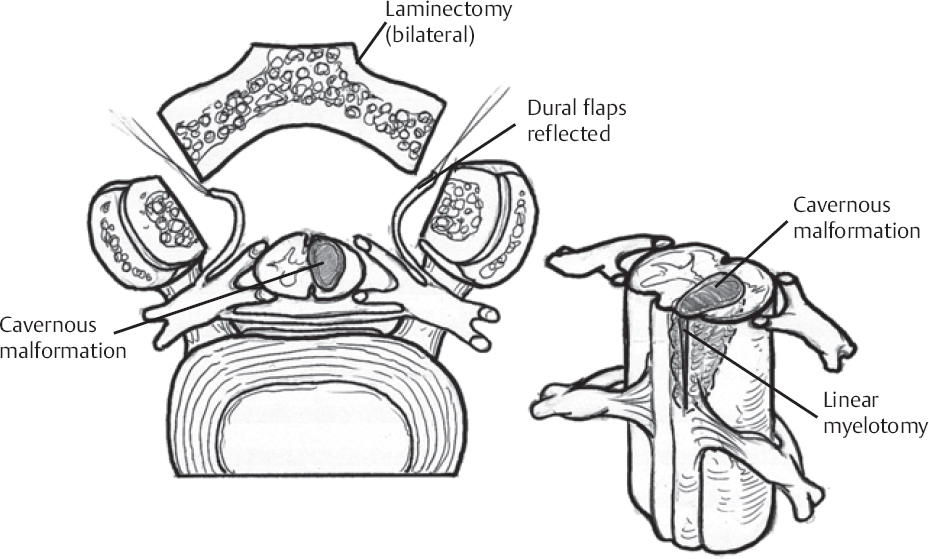♦ Preoperative
Operative Planning
- Review imaging (magnetic resonance imaging)
Routine Equipment
- Laminectomy instruments
- Microsurgical instruments
- High-speed drill (optional)
Special Equipment
- Consider neurophysiological monitoring of somatosensory evoked potentials and motor evoked potentials
Operating Room Set-up
- Open-frame spinal table or electric table with bolsters or Wilson frame
- Ensure ability to obtain anteroposterior and lateral radiographs to confirm operative levels
- Headlight
- Loupes (optional)
- Bipolar and Bovie cautery
- Microscope with bridge
Anesthetic Issues
- General anesthesia
- Arterial line for blood pressure monitoring
- Intravenous antibiotics (cefazolin 2 g or vancomycin 1 g for adults) should be given 30 minutes prior to incision
- Dexamethasone is given to reduce swelling
- Minimize halogenated inhalational agents and nitrous oxide if neurophysiological monitoring performed
♦ Intraoperative
Positioning
- Patient prone
- Secure head with foam mask, Gardner-Wells tongs with 15 lb of traction, or Mayfield head holder
- If using foam mask, ensure no ocular pressure
- For lesions at T6 or above, pad arms and tuck along sides; for more distal lesions, abduct shoulders and flex elbows 90 degrees
Sterile Scrub and Prep
- As for posterior cervical or posterior thoracic approach
Incision
- Center linear midline incision over the levels of the lesion to permit exposure of one level above and one level below the lesion
Laminectomy
- Bilateral subperiosteal exposure to medial facet joints bilaterally
- Perform bilateral laminectomies from one level proximal to one level distal to the cavernous malformation
- Do not violate facet joints (may lead to postoperative kyphotic deformity)
- Wax bone edges, obtain meticulous epidural
Dural Opening
- Open dura in midline
- Secure edges of dura to paraspinal muscles with 4–0 silk tacking sutures
Resection (Fig. 139.1)
- Identify location of lesion by inspection; the pia overlying the cavernous malformation may be identified by its grayish blue discoloration
- Intraoperative ultrasound may be helpful if lesion not visible on dorsal spinal cord
- Perform sagittal, linear myelotomy over the area of the lesion where it appears most superficial; for more deeply situated lesions, may retract the margins of the myelotomy with pial sutures
- Develop a plane between surrounding gliotic tissue and the lesion with a microdissector
- Cauterize lesion if necessary to shrink it and facilitate dissection
- Inside out piecemeal dissection of the lesion may minimize trauma to surrounding spinal cord
- If cavernous malformation is located ventrally, exposure may require division of the dentate ligaments to allow mobilization of the spinal cord
- May safely evacuate old hemorrhages
- Ensure complete resection
Closure
- Close dura primarily with 4–0 silk running suture, either locked or unlocked
- May use onlay dural substitute sealed with fibrin glue or similar product
- Place drain, if necessary, deep to fascia
< div class='tao-gold-member'> Only gold members can continue reading. Log In or Register to continue
Only gold members can continue reading. Log In or Register to continue
Stay updated, free articles. Join our Telegram channel

Full access? Get Clinical Tree







